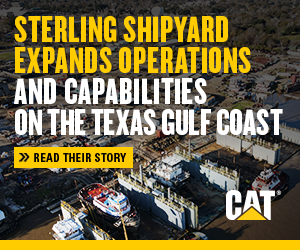The new administration’s infrastructure priorities will become clearer over the next few weeks and months. We hope that ports and waterways are given more than lip service in whatever emerges.
At least some states are not waiting for federal initiatives. The Illinois Department of Transportation is currently gathering comments as part of its plan to invest $150 million identified for improvements to the marine transportation system in Gov. Pritzker’s Rebuild Illinois program. Of that amount, $40 million is already committed to supporting a public-private partnership to build a new inland port at the confluence of the Mississippi and Ohio rivers in Cairo. As its website notes, Rebuild Illinois is not only the largest capital program in the state’s history, but also the first one that touches all modes of transportation: roads and bridges, transit, waterways, freight and passenger rail, aviation, and bicycle and pedestrian accommodations.
In taking this approach, Illinois is belatedly following the lead of neighboring states in “de-siloing” transportation issues, considering all the modes together as one system whose parts fit together and complement each other. As you read in last week’s Waterways Journal, Kentucky’s Transportation Cabinet is holding a series of “summits” as part of its Kentucky Riverports, Highway and Rail Freight Study.
One of the topics that emerged in a session given by veteran waterways analyst Ken Eriksen was that the COVID-19 pandemic has caused short-term shifts away from waterways and toward trucks as supply chains scrambled to adapt to pandemic-driven drops in demand and changes in consumption.
Now that a vaccine is on the horizon, those states that have comprehensively studied their transportation systems in all modes will be in a much better position to take advantage of the demand-driven growth in freight traffic that will surely rebound when more normal patterns of travel and consumption can be resumed. That growth will highlight the importance of green, efficient and safe waterways more than ever.




